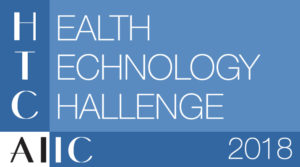Autori »
Lista completa degli autori
Area tematica
Sviluppo di tecnologie e dispositivi per la salute
Abstract
A biosensor is “a self-contained analytical device that combines a biological element with a physicochemical component to generate a measurable signal for detection of an analyte of biological importance”(Patel, Suprava, et al, 2016). It has immense potential for applications in medical diagnostics. Generally, a biosensor consists of three basic components: (i) a detector to detect the biomolecule and generate stimulus, (ii) a transducer to convert the stimulus to output signal, and (iii) a signal processing system to process the output and present it in an appropriate form. XTPL technology, nanomaterials printing based on a guided assembly of nanoparticles using the dielectrophoretic attraction, prints submicron conductive lines which can constitute a building block of a biosensor (first component of biosensors).
Proof-of-concept experiments performed by XTPL team have shown that submicron lines assembled from metallic nanoparticles can be applied to optical and electrical biosensing.
The applicability of the submicron conductive lines for optical sensing was tested by functionalizing the surface of the nanoparticles with biotin to facilitate specific binding of streptavidin-functionalized protein. Deposition of protein solution (intrinsically fluorescent) on the printed lines, results in a well-defined emission pattern perfectly correlated with the position of the line. The dramatic contrast between the optical response of the proteins on the line and in the background is driven mainly by the plasmonic interactions facilitated by the metallic nanoparticles. This approach opens the way for creating a universal sensing platform for both electrical and optical detection.
These experiments demonstrate that we are just at the beginning of biosensor future towards cheap and scalable fabrication along with efficient functionalization for targeting selected analyte. In fact, physicochemical properties of the lines printed by XTPL technology can be controlled by changing 1) amplitude, shape, and frequency of the electrical signal; 2) ink properties; 3) shape and size distributions of nanoparticles; furthermore, the printing process can be performed on any dielectric substrate, without any limitations regarding the shape of the substrate. Finally, neither clean-room conditions nor toxic gases are required.
Autori
Bartosz Walter xtpl wroclaw poland
Aneta Wiatrowska xtpl wroclaw poland
Filip Granek xtpl wroclaw poland
Carla Cambiano xtpl wroclaw poland

